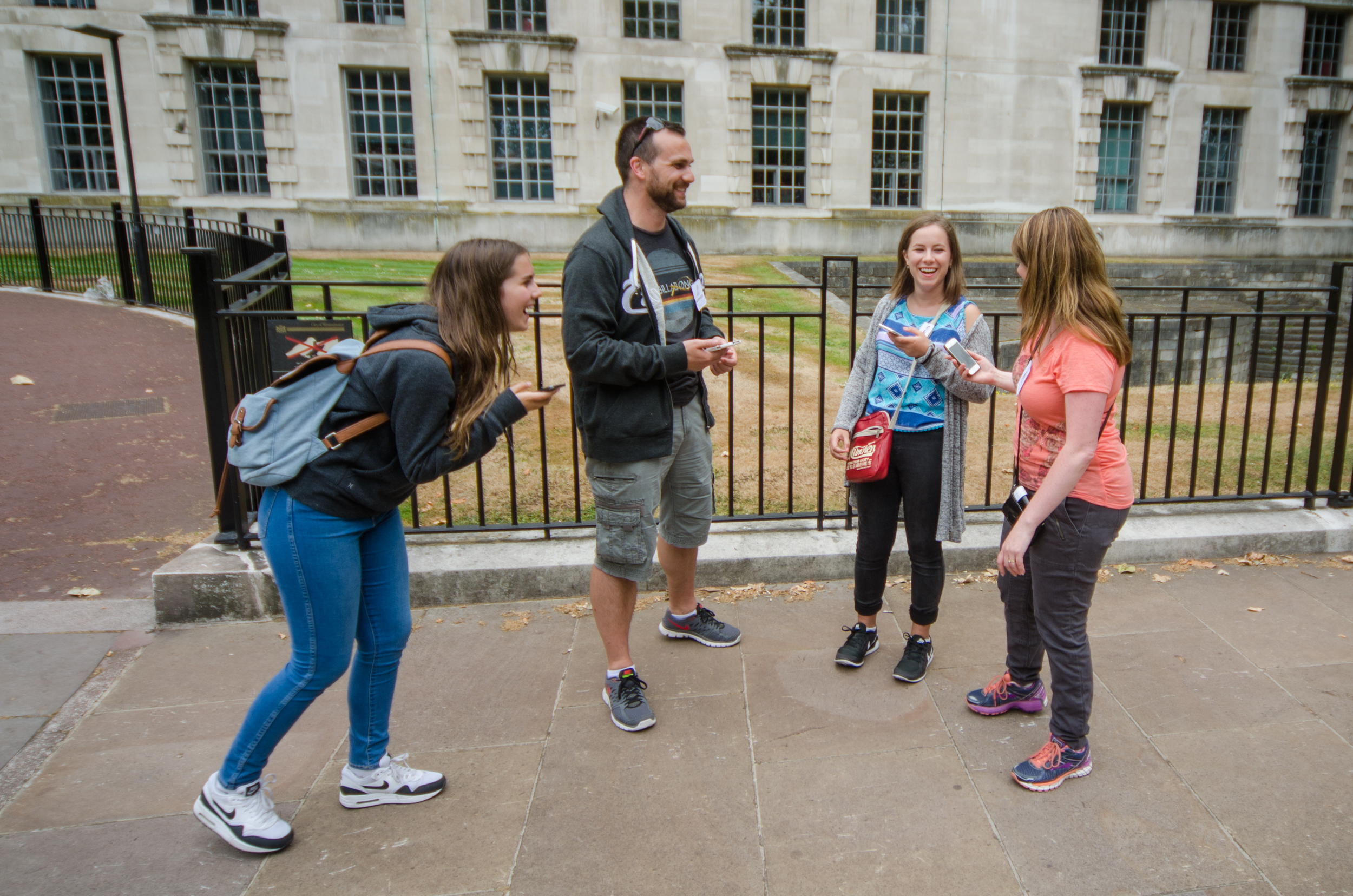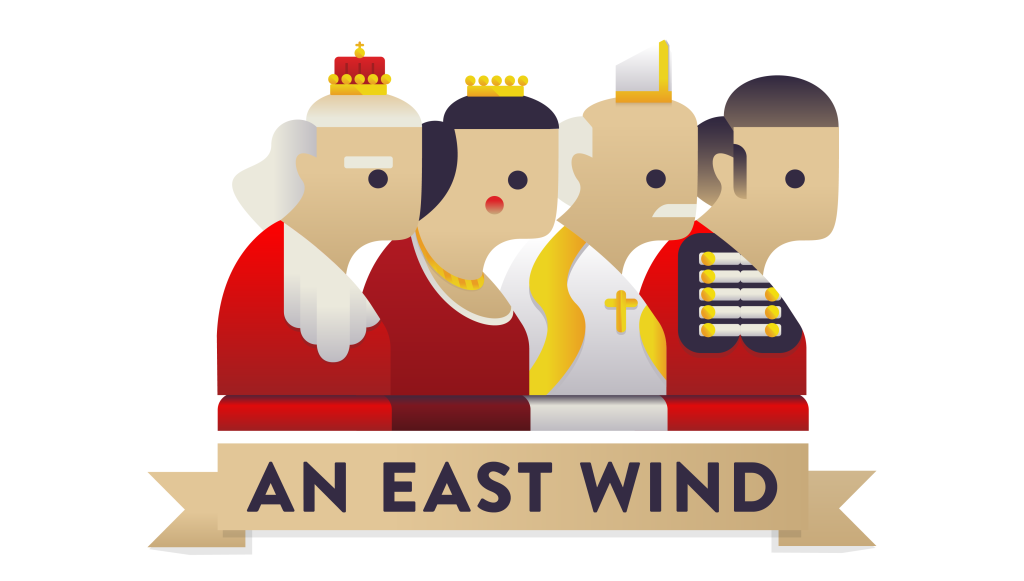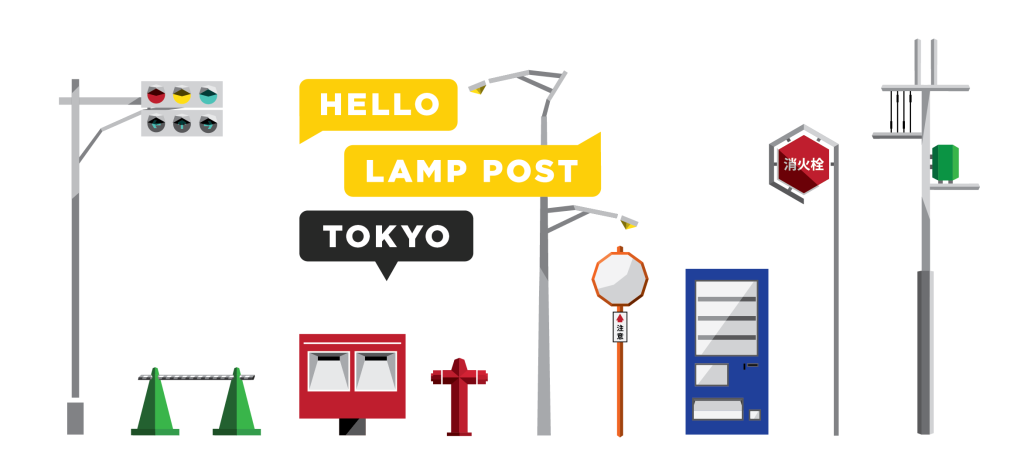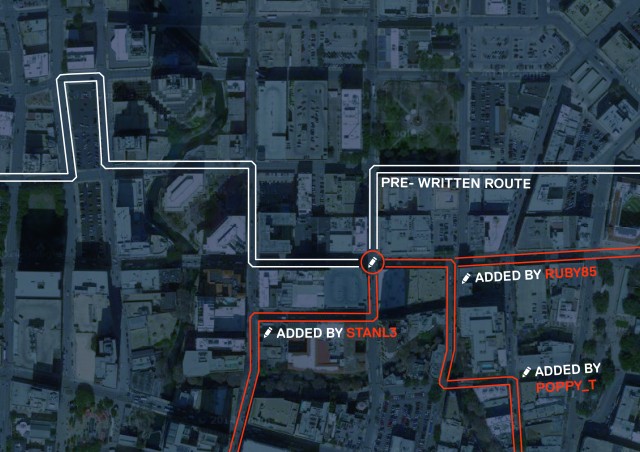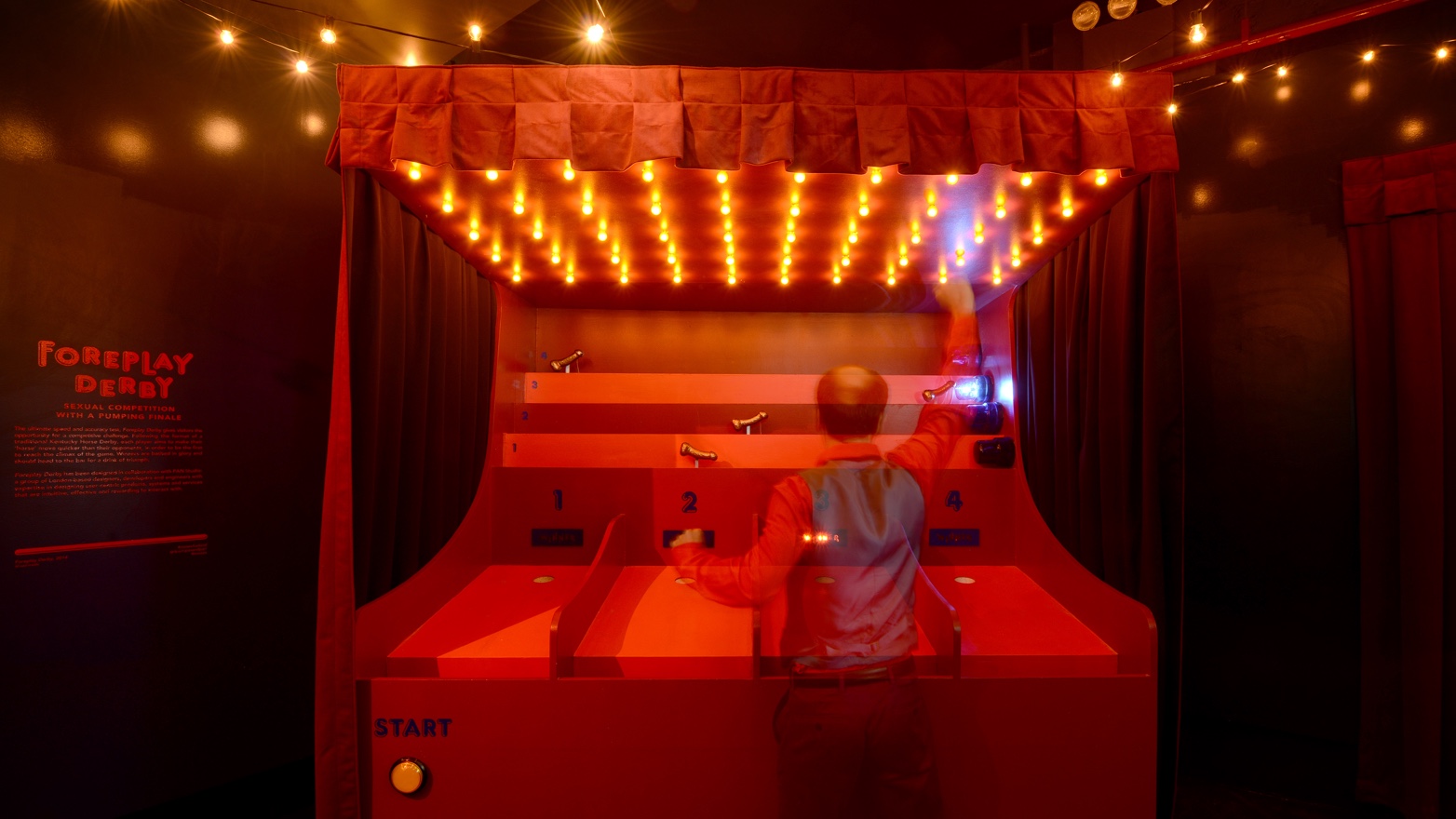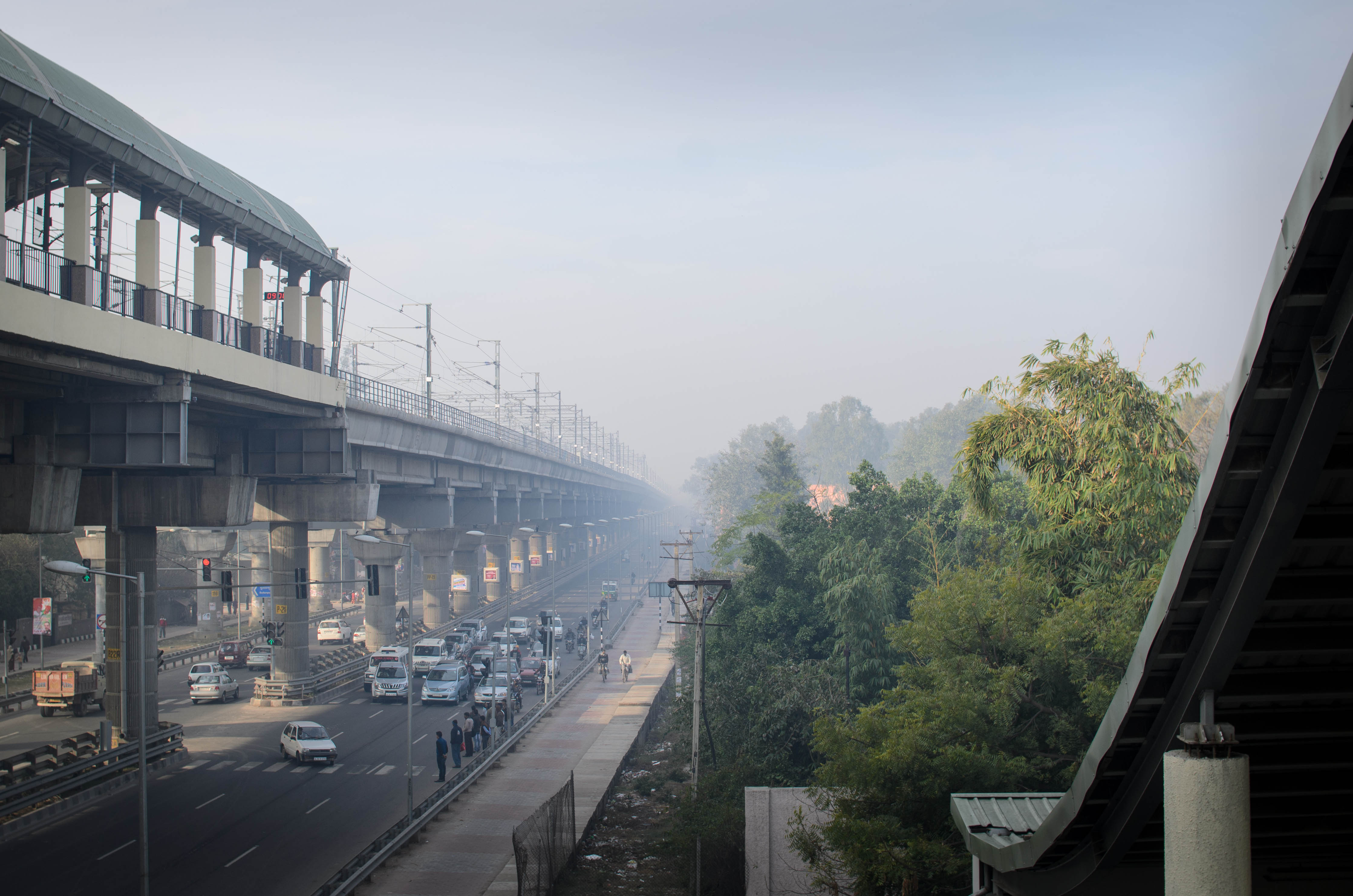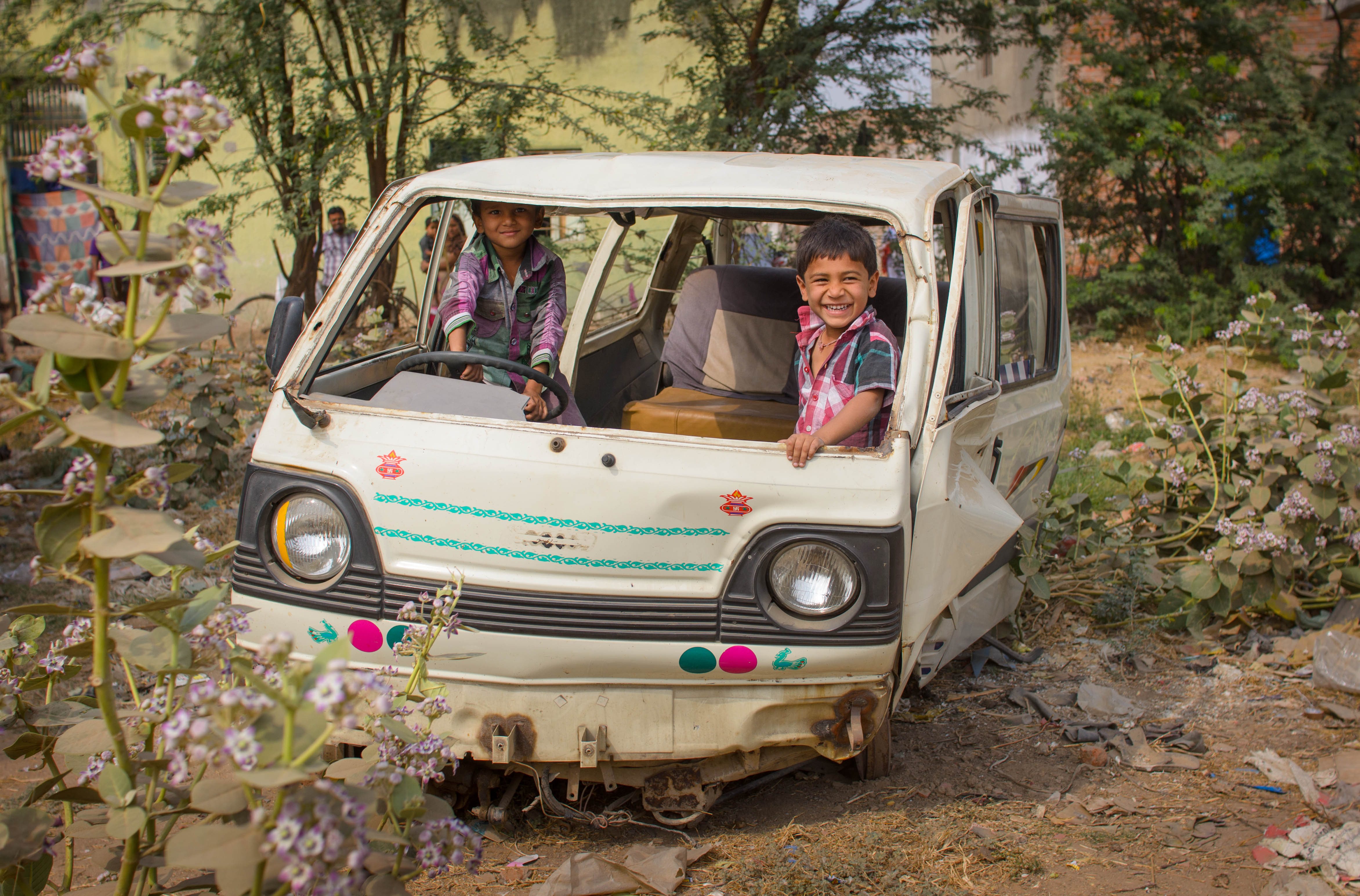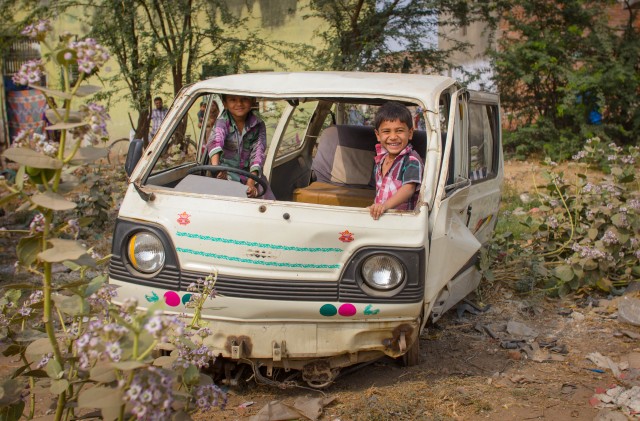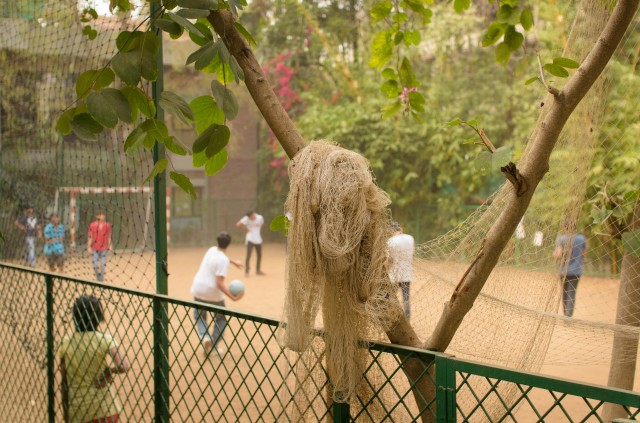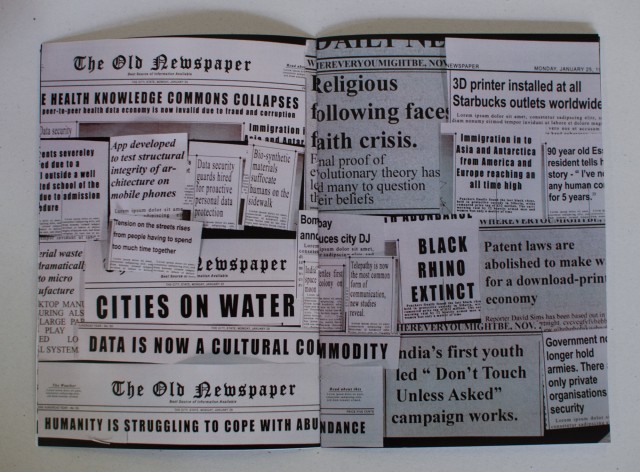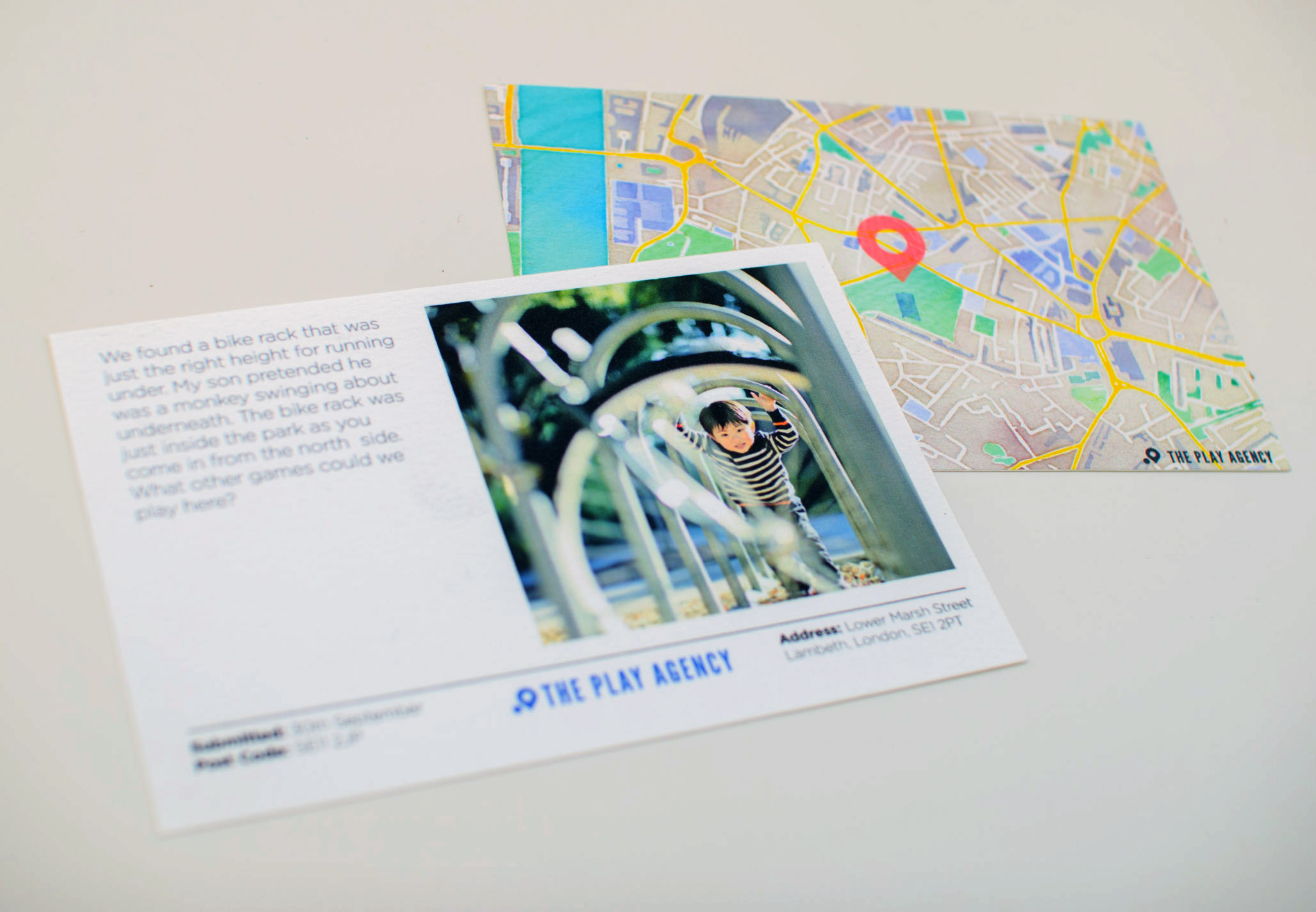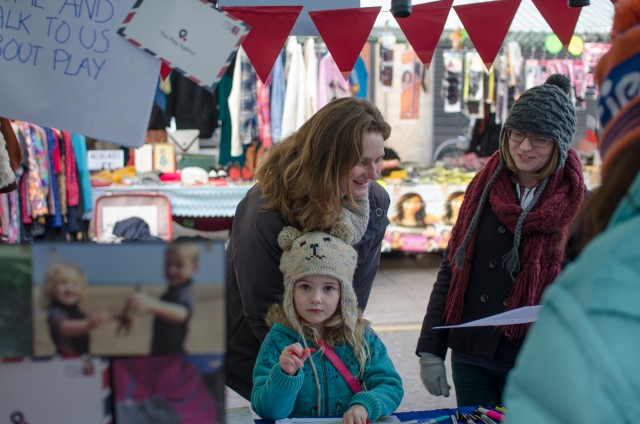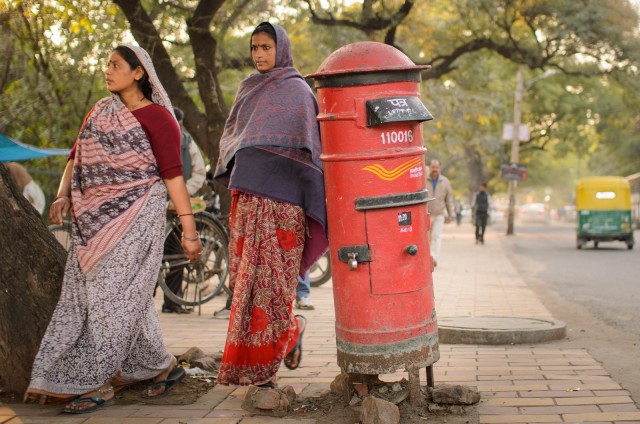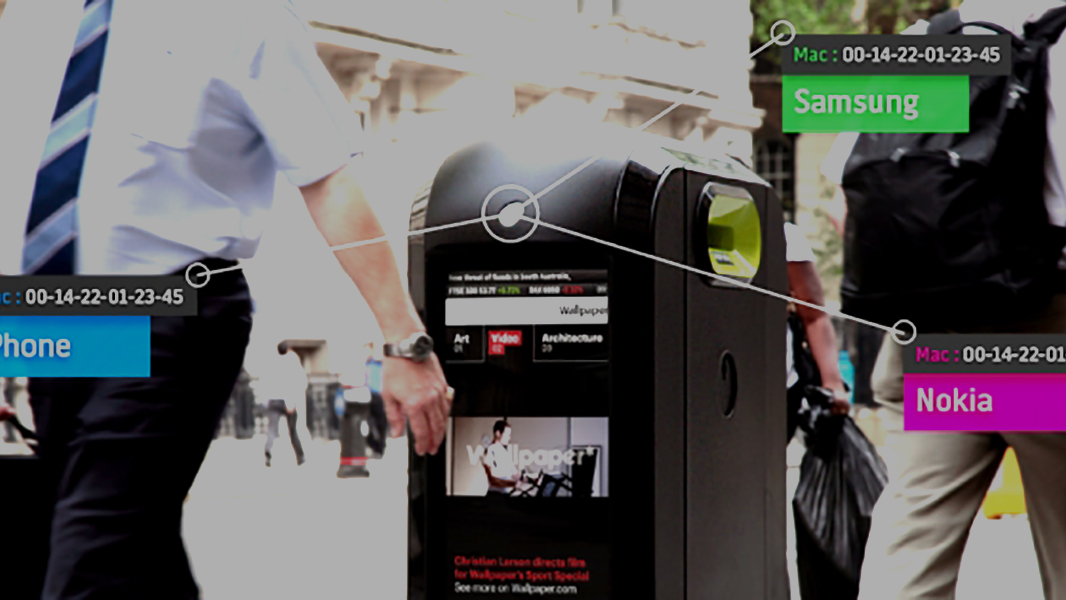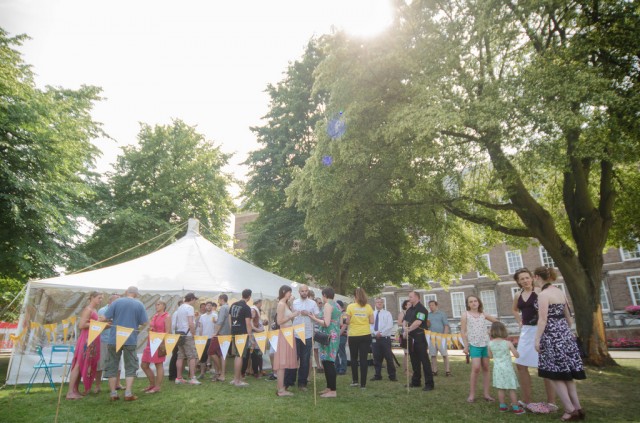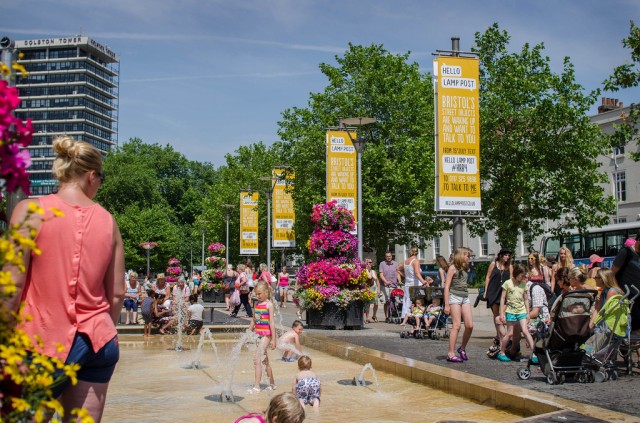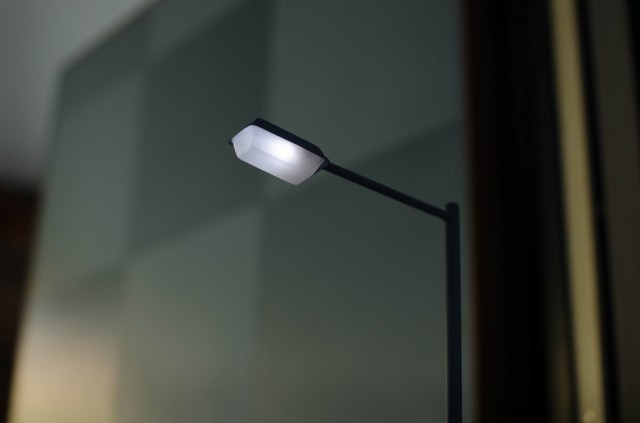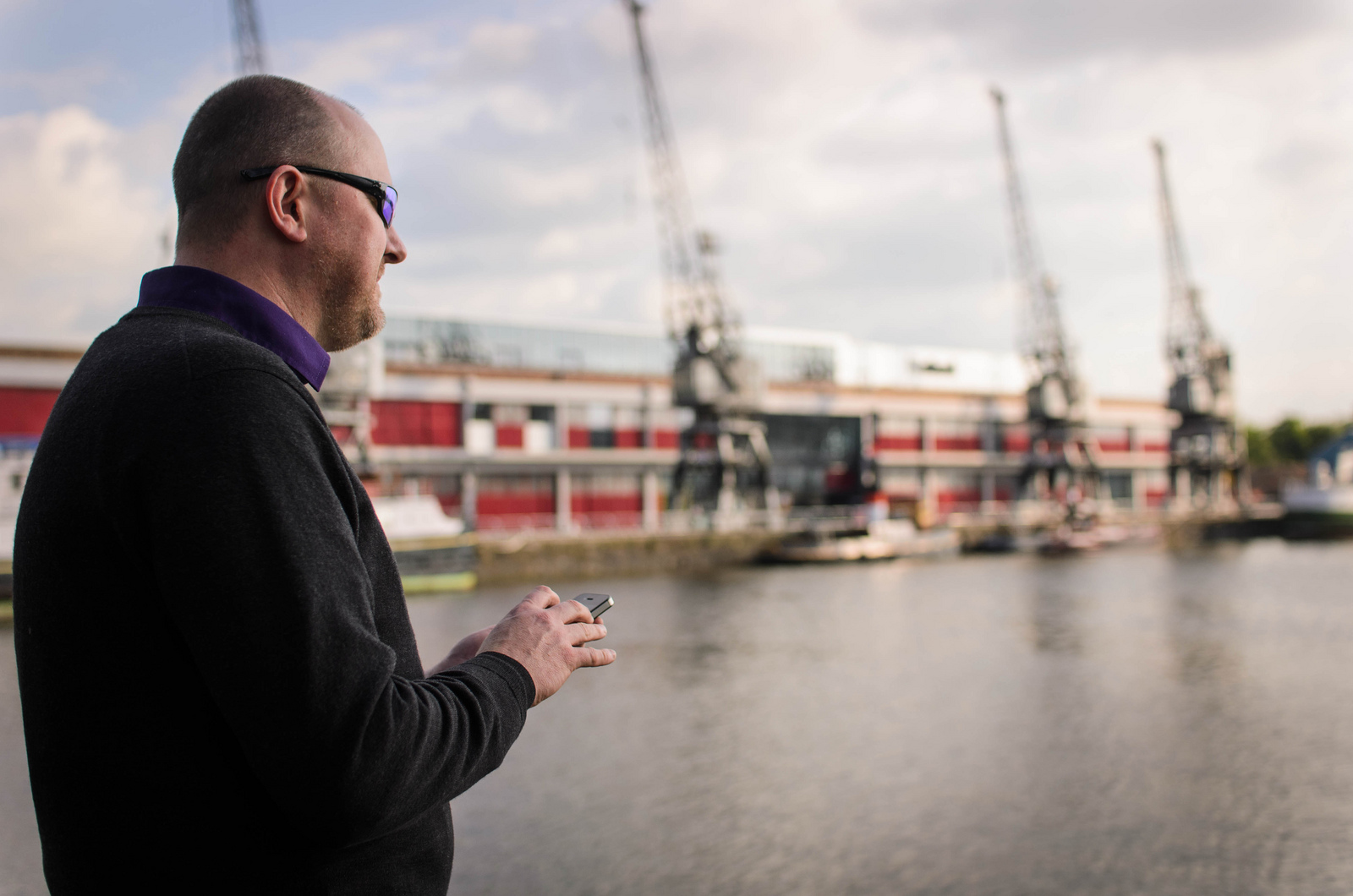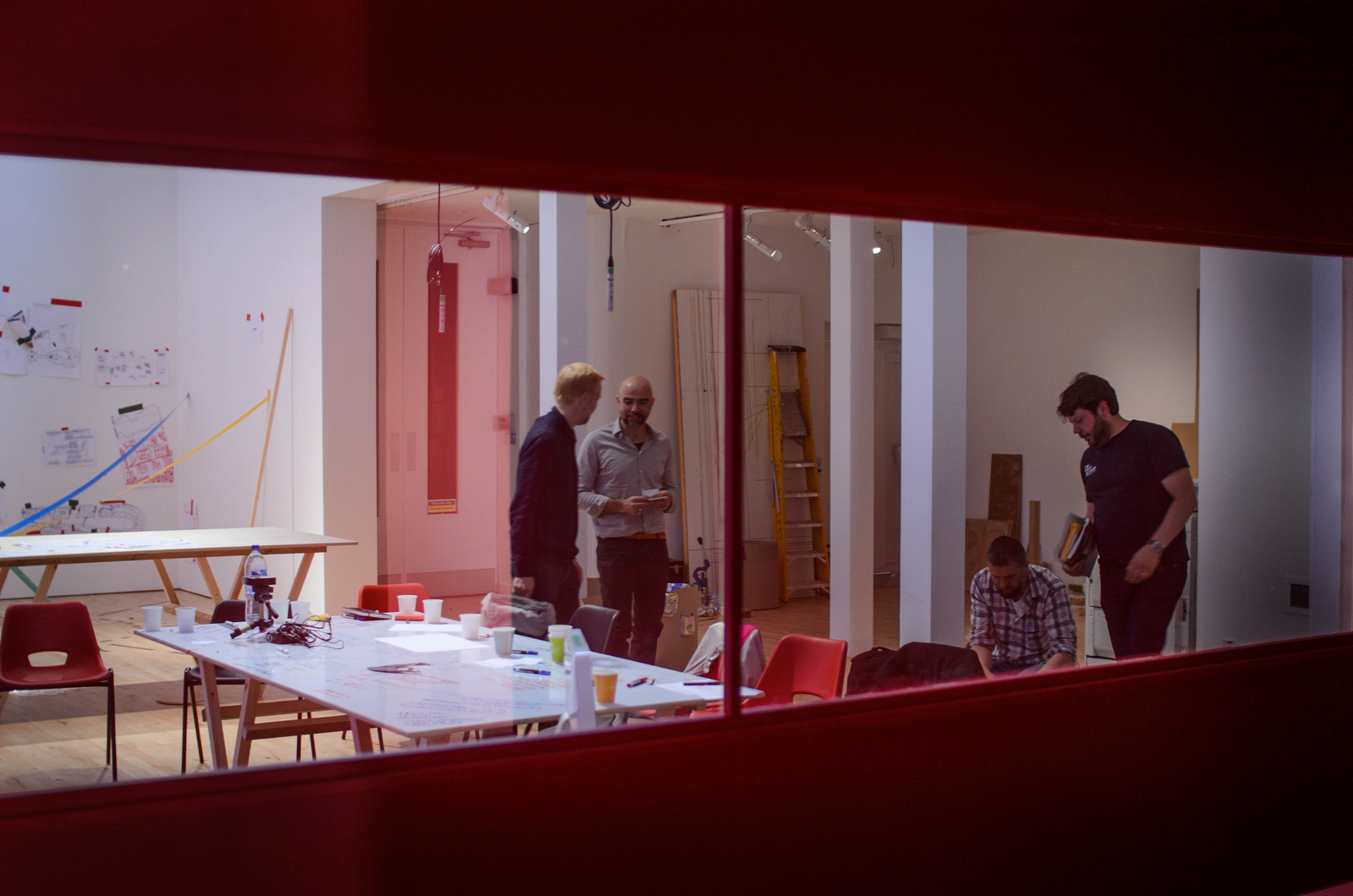Ben Barker
29th August 2014
Last month we worked on Better Than Life, Coney’s 45-minute interactive theatre piece designed for a small live audience and an unlimited number of people online simultaneously. Though created for a paying public, it was very much a research piece, an exploration of modes and markets for development in the digital arts. By blending elements from theatre, gaming and TV, it set out to explore how drama is generated when agency is given to audiences online and in a physical space to influence a single narrative world. Can you create theatre that is equally compelling for both audiences?

The narrative focused on the life of Gavin, an unassuming cult leader whom, under the direction of passionate believer Shipra, had developed an inquisitive following. In their headquarters, hidden behind a bike shop in New Cross, Gavin had predicted a potentially world altering event which the live and online audience were coming together to avert.
Coney approached us to design the interactive experiences that would cross between the two audience contexts. We’ve always been keen to explore the impact of networked experiences on live immersive theatre. So alongside the set, visual and online design, we worked on a number of interactions, including designing the Ouija board mechanic integral to the conclusion of the piece and the disappearing trick seen above.
What does agency look like online?
This was a big starting question. There is a precedent set for research in live-streamed immersive theatre by Punchdrunk’s digital staging of Sleep No More in New York. In that work they aimed to recreate their very successful live show for an online audience, which they did by linking an audience member online with one in the live space, thus creating a one-to-one relationship between audience online and off. The Nesta report goes into that work in more detail:
“In effect, Punchdrunk planned to create an entirely new theatrical experience based on ‘mixed–reality’ – the live performance linked with the online experience. Could they offer an interactive online user anything to match the quality of the interactive live experience that is at the heart of immersive work?”
As the work progressed it became clear that it was a hugely ambitious undertaking and had to be somewhat scaled back:
“The decision was made to focus on paired online and real–world participants who, over three hours, would work together to discover a hidden narrative.”
With Better Than Life we were particularly interested in exploring experiences that allow scalable online audiences, where numbers could reach into the thousands and still have a direct influence on the space. So our challenge was not ‘how do we recreate this experience online?’, but ‘how do we create something that suits both contexts well?’. A particularly relevant online experience was Kilo by Light Light, a crowd sourced, interactive music video seen below. There is a sense of the average online viewer, a visual consensus, yet at the same time there is room for an individual to standout. As I watch I find myself wondering about whats happening with the person wiggling her cursor in the top right corner of the screen.

Ouija Board
That line of inquiry led us to one of our key design decisions. There had to be a space somewhere in the piece that allowed online audience to see themselves directly relayed, whilst also being able to collectively affect a significant impact on the narrative. That is key to what it means to be part of a community, both being expressive as an individual and powerful together. We also felt it was important that people in the space were active in that exchange, could they influence or avert the power of the online community? What evolved from that was loosely termed ‘the Ouija board mechanic’, the idea of using a camera and projector rig, ceiling mounted and angled directly to the floor. This video stream would show the live audience, whilst the projector would relay the mouse position over the video of all online viewers. We would have a feedback loop of projected mouse pointers, creating spotlights in the space viewable to the live audience and then relayed back online via the live stream. So we had a mechanic where an audience online could expose a traitor, vote in a new leader or influence the progression of a particular emerging storyline. The challenge was then to weave it into the narrative and make it work technically. I won’t say too much about how it came together narratively, but suffice to say it includes some of the above.
What were the challenges? With BTL being a live streaming project, we talked a lot about lag and its impact on interaction. As the project developed there was a general feeling that below 2 seconds was fine, hardly longer than an intake of breath; 2-5 seconds could be handled using dramatic pauses, perhaps even create drama of its own as people awaited responses or feedback. However anything over 5 seconds and we were in a difficult place where audiences might start to waiver and interactions between online and live would become jarring. With the number of streams we were aiming for and heavy load on the servers, BTL was running at between 4-7 seconds of lag. This among other technical issues, such as calibrating the projector and making actors distinct enough from above, meant the Ouija board mechanic struggled. Players moused around and waited for responses, never quite long enough to understand the relationship between what they were doing and what was happening in the space. As a result, without support from the cast, readability in the space was largely lost. However moments of wonder did emerge. In one play-through an online participant managed to guide a live audience member around the space by shining his mouse cursor spot light onto his open hands. So although flawed, there is still something very exciting about having had at times 100 or more people organically influencing and expressing themselves upon a live narrative from their bedrooms and lounges around the world.
The Disappearance
A more definitely successful interaction was the disappearing trick seen above. The show needed a climax that read equally well online and in the space. A camera was rigged at the perfect viewing spot, 90 degrees from the stage, to ensure it read well online, then the live audience were moved to a position where they were viewing from the optimum angle. Though a far less technical challenge, it’s value came from leaving both audience unsure as to what had occurred, and looking to each other for answers. For the online audience, was it a trick just for them, something in the edit. For the people in the space, were the online audience aware of the nature of what had happened.
The Space
Both of the above interactions took place in the third and final space. The rectangular Orangery in New Cross was divided up into thirds, roughly equivalent to acts, each one delineated by a transparent butchers curtain. The second space had collaborative drawing exercise, where the live audience was pulled together to draw a vision for Gavin, set to the rhythmic pulsing of lights and sounds set by the mouse movements of the online audience. A far more ambient interaction, but important in getting that audience used to the more involved mouse interaction coming in the final scene.


Tests
In the first space we created a number of smaller profiling tests, designed as a way of giving an identity to each of the live audience members so if things came down to a personality test later on people online would have a way of recognising particular traits. The outcome of those tests resulted in Shipra assigning one of four profile types.
One of the tests was a galvanic skin response test, built using this source code. Another was a Rorschach object recognition test seen below.

In hindsight we might have made better use of the online audience at this point, by having them pass judgement or able to give rewards or enact punishments. These test were visually scientific, even sinister, the hint of something a bit more shocking here, playing with the fear of an online judgement would have set things up well for what was to come.
Is there a difference between a person in the space making a judgement on how you performed and a remote collective doing that? I think there is and I think it comes down to a perceived disconnect. Empathy and personality are removed. If the online audience could have suddenly popped out and made a wrong, surprising or even cruel decision it would have reminded all audiences that the order was only being maintain by a collective of humans, rather than an immutable digital system.

Visual Design
We also designed the online interface and show branding. The interface posed questions about how commonplace this level of audience interaction was. We started out trying to be quite clever, with hidden interactions, Easter eggs for unlocking other camera streams and credits to be spent on interactions including the Ouija board. Bearing in mind the other technical challenges, such as lag and the steep learning curve, we may have over reached. We were asking people to understand a narrative, online/offline interactions and an interface all withi 45 minutes. Given the newness of this type of experience, particularly for the online audience, things may have felt a little borderless. People in the space had a clearly defined sense of scale: three acts made clear by the space in front of them. It must have been much harder for the online audience to know what or indeed, how much, to expect.


What does an online bar look like?
Throughout the development of the show, this question kept coming up. Though on the surface a peripheral challenge, it always felt like an important part of the research. Aside from being a vital source of revenue, theatre bars form an important part of the experience; a place to dissect what happened, even more so in the divergent narrative worlds of immersive theatre. As the show progressed, that question became more pertinent as we realised we’d forgotten to answer something even more obvious: What is it like to be online with other people? It took two thirds of the run to realise that, of course, people with access to a chat window would be as fascinated by each other, where they come from and how they got involved, as the theatre piece unfolding in front of them. Experiencing the theatre online was more like being in a bar than a theatre, not a story to be navigated, but a social experience to be discussed in real-time.
As we saw this trend emerging we knew what we had to do with the bar space at the end of the show. People in the space get beer, people at home do the same. Then we stood the live audience in front of a camera and the people online asked them things through the chat window. It was without doubt the show’s biggest success. We saw the two separate views coming together and unpicking what they had seen. A sense emerged from both groups that the other had had the full experience. People online felt like they were working the story out with each other, rather than having the whole story. Whilst people in the space were seeing odd asides to camera that perhaps didn’t make sense. This led to better conversations later, especially if narratives start coming together. The shared sense of confusion after Nigel’s disappearance from online and offline worked really well.

Better Than Life was a hugely ambitious experiment, broadcast live around the world. There were breakages, successes and failures, but most of all it was really good fun. We look forward to further exploring the future of online theatre.
Better Than Life was a collaboration between Coney, Goldsmiths and Showcaster. It was funded by Nesta Digital R&D
More about the show: Better Than Life – Coney
Guardian review: Coney No Island
Sketches Review: Better Than Life
